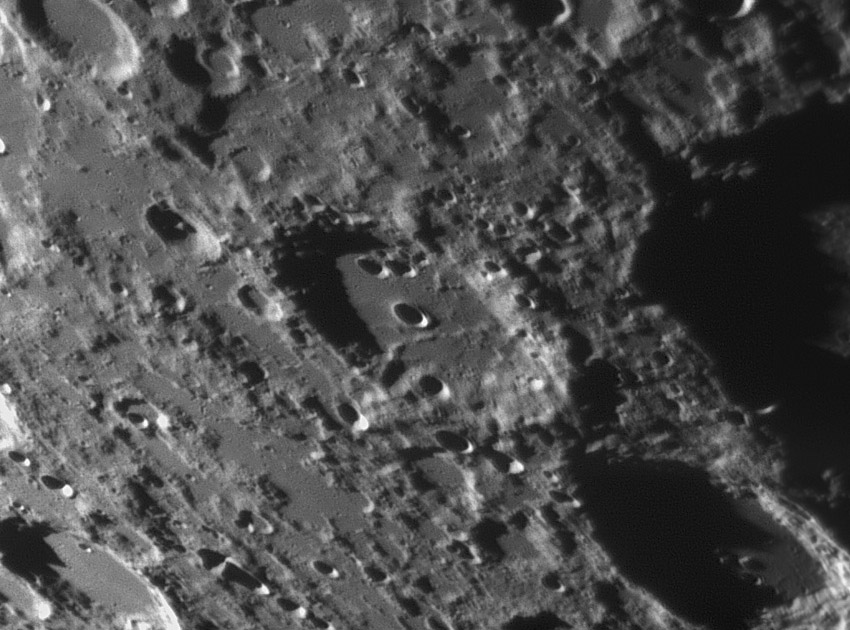
image by Jason Irby
It's not often that I see a great view of a crater for the first time, but this is an example - and it's from a new LPOD contributor. Scheiner - the 110 km wide crater in the middle of the frame - is a crater I’ve seen many times in regional views, especiallly since it is just southwest of Clavius (large shadow at right). But Jason’s concentration on it with perfect ligting shows features that I’ve never noticed before. In general, Scheiner is a very standard southern highlands crater - it's moderately old and has a smooth floor. But the floor has an unusual ridge crossing the eastern side. Looking at the Lunar Orbiter vertical view reveals the surprising fact that the ridge is curved - if seen on the maria it would look like the remnant rim of a flooded crater. But within the confines of Scheiner it can’t be such an older crater - it's too big. I hope it's a chance alignment of hills, otherwise I can’t explain it. The upper (northeast) rim of Scheiner looks odd too. It seems to be a mound of roughly textured material, whereas the opposite rim is relatively sharp and normal. I hazard to guess that the mound is a massive clot of Orientale ejecta - it points right back to that basin. Finally, I enjoy the central peak and sloping wall of the 29 km wide crater Scheiner B just west of Scheiner.
Technical Details
08 July 2007, 01:26-28UT. 12" Meade LX200GPS (f/25) + Lumenera Skynyx 2-1M, best 500/1500 frames.
Related Links
Rükl plate 72
Yesterday's LPOD: Half a Moon is Better Than None
Tomorrow's LPOD: The Blue Square Challenge
COMMENTS?
Register, Log in, and join in the comments.



